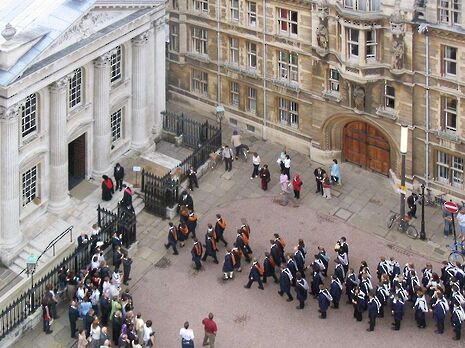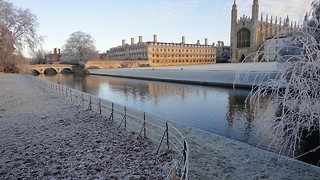Feeling ‘other’ is still a problem at Cambridge
While access for students from minority backgrounds is improving, the curricula is still dominated by white males, argues Yukiko Lui

Cambridge wasn’t built for me. Those people who once dreamed up the chapels and courtyards of this city lived in a different time, when minorities didn’t have a say in how things were run. Cambridge wasn’t built for many kinds of people, and, despite that, those people now roam its streets, study in its rooms and sip coffee in its halls. But even our best efforts to carve spaces out for ourselves and others like us haven’t displaced the feeling of otherness that’s still alive in the very heart of Cambridge. Things that are quintessential parts of Cambridge and underpin the wonder and mystique surrounding the university often also serve as a reminder that we – women, non-binary people, people of colour, state school kids – are still considered strange interlopers here.
The first time I really understood what it meant to be ‘other’ was in Cambridge. The concept is somewhere in between exclusion and ostracisation – it means, literally, to feel like you are other, not one of the nebulous but power-wielding ‘us’. I had felt othered before by media representations (or lack thereof) or by my gender in certain situations, but Cambridge is a whole other planet. We call it the Cambridge bubble, but it’s more like a time capsule. Call it prestige or history, but there’s something inescapable in the air and in the walls that makes this place feel like Cambridge, for better or for worse. Cantabs past and present take pride in tradition and doing things the way they’ve always been done, and in doing so we’ve become used to the novelties and eccentricities of things like formals and the use of Latin.
“Our collective imagination is wide enough to accommodate more than one narrative of intellectualism or culture”
Wearing a gown is a novelty for anyone born in the last century, and we’ve just accepted them as part of our lives as students at Cambridge. But otherness doesn’t have to be outwardly exclusionary, and often it’s the insidious kind that takes the heaviest toll on marginalised students. It’s particularly visible in our curricula. The students at SOAS asking for Asian and African philosophers to be included in their courses are highlighting a fundamental problem that many marginalised groups experience at schools and universities. Institutions like to tout their internationalism and their global outlook and reach, but without a varied curriculum those statements are empty of meaning. It’s only right that in a world where both our similarities and differences have been laid bare by the internet, we recognise and validate diversity of experience.
Critics will say that we shouldn’t change our curricula to accommodate the fads and quirks of today’s young people. It is said that the intellectual giants of yesterday (or two hundred years ago) shouldn’t be so easily swept aside, and I agree: they shouldn’t be. But our collective imagination is wide enough to accommodate more than one narrative of intellectualism or culture. The world has always been a jumbled up, interconnected place, but maybe it’s just taken Twitter for us to be able to see that. Online, public space has been made democratic, making it easier to access public forums and giving us exposure to new, previously unimaginable things. The other has gradually bled into the mainstream, and we are hearing marginalised voices turn from whispers into shouts.
This is what it means to be truly forward-thinking and global. As students at a prestigious institution like Cambridge we are in a position to challenge the single story, as Chimamanda Ngozi Adichie put it, and we can do it without compromising the essence of our university or our traditions. We can wear our gowns and talk about Rumi or James Baldwin or Murasaki Shikibu at the same time. There is nothing inherently ‘Cambridge’ about a restricted reading list. But Cambridge is now made up of the kids who wouldn’t have been let through the doors a century ago, and our traditions need to give us room to grow, not restrict our movement. They also need to belong to us: the students who make up the University. In a Cambridge that is, demographically, worlds away from its predecessors, this means sometimes choosing the welfare and comfort of its current students instead of paying respect to those few traditions which try unsuccessfully to turn the clock back on diversity and all the progress we’ve made thus far.
 Comment / Anti-trans societies won’t make women safer14 November 2025
Comment / Anti-trans societies won’t make women safer14 November 2025 Features / Beyond the Pitt Club: The Cambridge secret societies you have never heard of16 November 2025
Features / Beyond the Pitt Club: The Cambridge secret societies you have never heard of16 November 2025 News / Controversial women’s society receives over £13,000 in donations14 November 2025
News / Controversial women’s society receives over £13,000 in donations14 November 2025 Fashion / You smell really boring 13 November 2025
Fashion / You smell really boring 13 November 2025 News / A matter of loaf and death17 November 2025
News / A matter of loaf and death17 November 2025








